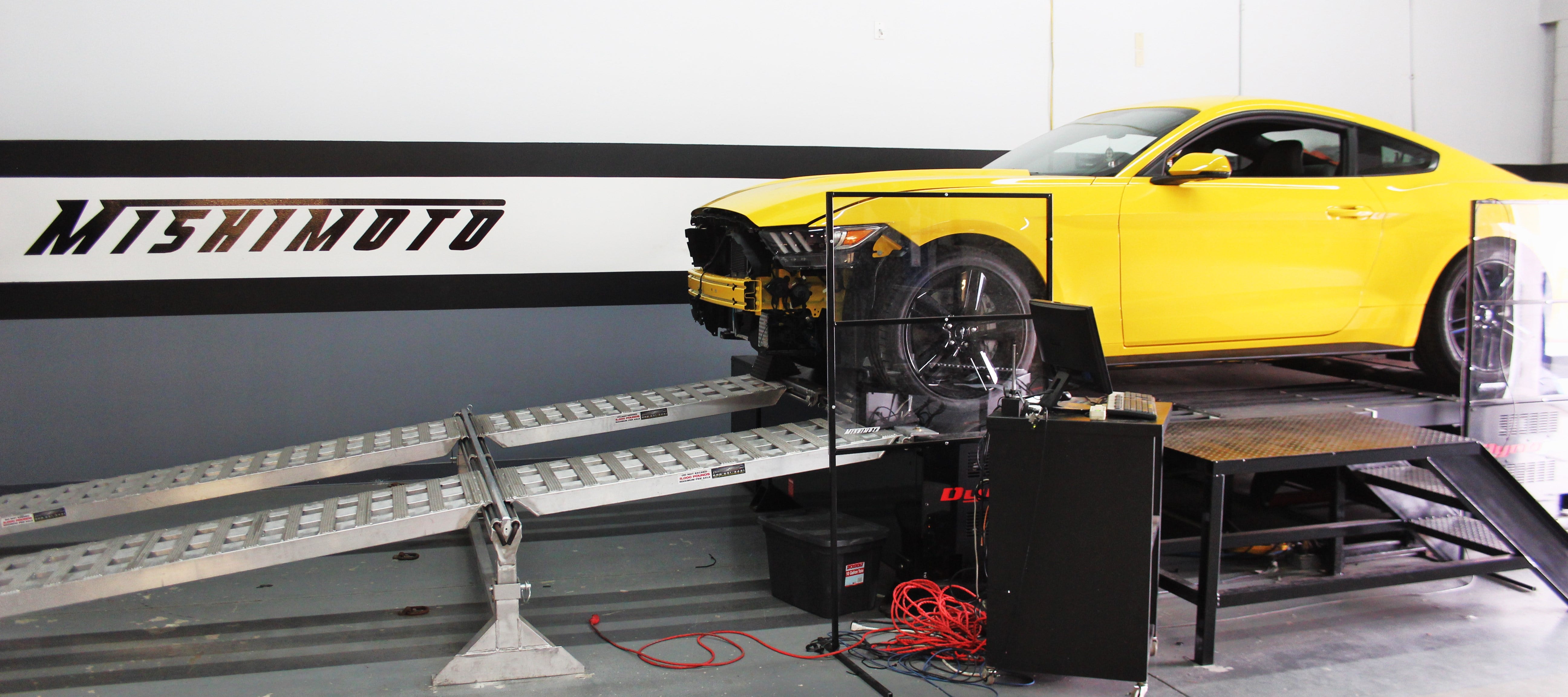
The Mustang EcoBoost Intercooler, Part 3: Prototype Testing
Interested in picking up this awesome Mustang EcoBoost Intercooler? Check out our product page for more details!
Mishimoto Mustang EcoBoost Performance Intercooler
Will this cooler be efficient enough to properly handle the heat and pressure created by the EcoBoost? Will we see any power gains during testing? These questions will be answered in the next few minutes, perhaps even quicker if you get scroll happy and skip ahead. Don't ruin the suspense!
Stock Intercooler Testing
First, we would need to capture data from the stock intercooler. We installed bungs on both the hot- and cold-side couplers for our pressure and temperature sensors.
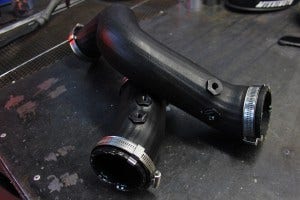
Testing sensor bungs
We then strapped the Mustang to the dyno and made pulls until we had consistent data. Special care was taken to monitor the time frame between runs to ensure we could produce a nearly identical test for each pull, as well as with our prototype cooler.
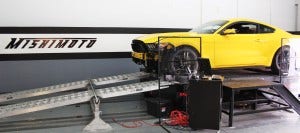
EcoBoost Mustang on dyno
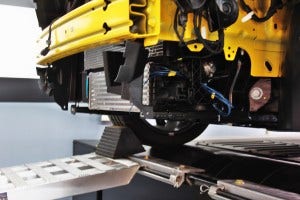
Testing stock intercooler
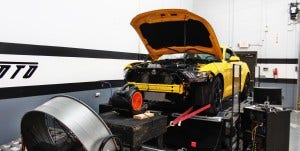
Testing stock intercooler
Mishimoto Prototype Testing
Once the stock test was complete, it was time for the Mishimoto prototype. Because the end tanks were slightly different on this mockup unit, we would be adding our sensors to the actual outlet pipes. We then welded an intercooler pipe that would emulate the stock unit. Check out the sensor bungs welded to our intercooler!
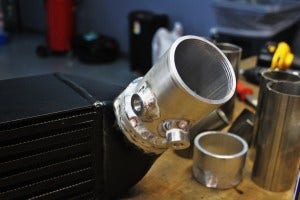
Mishimoto prototype intercooler sensor bungs
Then we hit the dyno again to test our prototype and capture some performance and efficiency data.
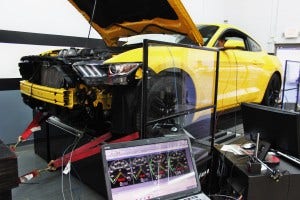
Mishimoto prototype intercooler testing
Check out a video compilation from testing both coolers!
Prototype 1 Testing Results
Now that we had a fair amount of runs on each cooler, we could compare the results to see how our first prototype did. Our primary concern with a heat exchanger is temperature benefits. Check out the outlet temperature chart shown below.
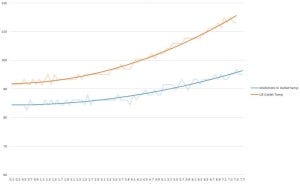
Intercooler outlet temperature comparison
We saw huge temperature drops with our prototype cooler. The stock cooler is reaching temperatures of around 115°F by the end of the pull, while the Mishimoto cooler keeps temperatures right around 95°F. This is a 20°F reduction in temperatures with our prototype unit. Ambient temperatures in our shop were right around 65°F on this particular day, so our cooler was able to drop temperatures to within 30°F of ambient. This occurred with our single intercooler fan, which provides 30-40 mph wind speeds. For future testing, we hope to collect on-road data that will feature greater airflow and potentially even better temperature drops.
Next, we have a power output dyno plot.
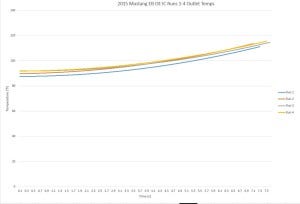
Stock intercooler heat-soak test
We conducted four runs with the stock intercooler with a minimal cool-down period to evaluate the effect of heat-soak on outlet temperatures. As you can see, on a stock vehicle the outlet temperatures rise by about 5°F after four runs. Not bad from the stock cooler, but this is certainly an area for potential improvement.
What's Next?
Next time we will be covering the finalized intercooler design we have planned. Based upon our data from the first round of testing, we are going to make some minor adjustments to the core, design our end tanks, and then work up a final prototype. Once this prototype is complete, we will be conducting additional testing to produce the final numbers for our intercooler.
Stay tuned!
Thanks




